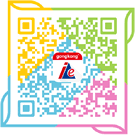BitFlow Karbon 機器視覺

Virtual Frame Grabber
One of the exciting new features of the Karbon-CL is the support for virtual frame grabbers. A virtual frame grabber, from the software and interface point of view, is identical to a normal frame grabber. The difference is that the Karbon architecture can support a wide variety of different virtual frame grabbers with no change in the hardware. This design can also support different numbers of frame grabbers on the same platform. For example, the Karbon-CL can be configured as two full Camera Link frame grabbers, or it can be configured as four base Camera Link frame grabbers. The software will see two or four (respectively) completely independent frame grabbers. The Karbon-CL could even look like one "double full" frame grabber (up to 160 bits), if and when the camera manufacturers come up with one. Further, the board become an interface for the completely non-standard device that you might be designing in your lab, just lets us know your requirements. Switching between the different virtual grabbers only requires a press of a button in our configuration tool. As the Karbon family expands, you'll see more new and exciting uses of this virtual frame grabber architecture.
FlowThru Architecture
For the last 10 years, BitFlow's camera interface products have been built around our revolutionary FlowThru architecture. Comprised of a user-programmable Video Pipeline, a flexible Camera Control Unit, efficient high-speed video FIFOs and a highly-optimized scatter/gather DMA engine, the FlowThru architecture allows the Karbon-CL to control, acquire, reformat and transfer video data directly into the user's application at camera speeds with zero latency or CPU usage. Our FlowThru architecture has been continuously optimized and enhanced to support a wide variety of imaging applications such as document/package processing, semiconductor, continuous web inspection, sequence capture and motion analysis and can easily be adapted to the specific needs of your application.
PCI Express Interface
The Karbon-CL uses a x8 PCI Express bus interface. The PCI Express bus offers huge increases in DMA performance over the PCI bus. However, what is less well known is that the PCI Express bus is always peer to peer. This means the the Karbon-CL does not share the bus with any other devices. In most motherboard architectures, it will talk directly to the PCI chipset that is on the memory bus. This direct connection equates to higher sustained DMA bandwidths regardless of system load. Also, most motherboards support concurrent full DMA speed on all of their PCI Express slots. The board will work in any slot that it fits in. This means not only x16 and x8 slots, but also, as is becoming the trend, x4 and x1 slots that use x16 connectors. Performance will be degraded in x1 and x4 slots, but the board will work fine in applications that don't require maximum data rate.
Camera Control and I/O
Supported by a GUI camera file editing utility (CamEd), the Karbon can acquire fixed or variable size images and features a programmable ROI (Region Of Interest) sub-windowing capability. The board provides a full set of camera control signals (CC1, CC2, CC3, CC4) and sync inputs (LVAL, FVAL, PCLK, trigger and encoder) for each camera connected to the board (up to four cameras can be connected). These signals are completely independent, although there are provision for driving all cameras from a signal set up encoder/trigger signals. There is also a large number of programmable general purpose outputs and inputs that are not tied to the camera's timing. The Karbon-CL board, as with our past interface products, supports not only simple triggering modes but also complicated, application-specific triggering and control interactions with your hardware environment.
Half-Size x8 PCI Express Board
Up to 128 bits input at 85 MHz
Acquire from four independent Base CL cameras
Acquire from two independent Medium/Full CL cameras
Acquire from two 10-tap CL cameras
FlowThru technology eliminates the need for on-board frame buffers, even with the fastest cameras
Hardware Bayer matrix decoding (optional)
Multi-tap cameras rasterized on the fly
Highly configurable acquisition engine
DMA at burst rates up to 2.0 GB/S
Supports images up to 256K x 128K
No frame rate limit
Quadrature encoder support including sophisticated triggering schemes
Encoder divider/multiplier
On board timing generator supports high-resolution exposure control
Independent trigger and encoder inputs for each camera
Independent CCs outputs for each camera
General purpose I/O
Appears to software as four independently programmable frame grabbers
Supported by the BitFlow SDK on 32 and 64-bit Windows
Acquire image sequences well beyond the 4 GB barrier
Drivers, utilities and examples for Windows XP/2003/Vista/Windows 7
RoHS Complaint
KBN-PCE-CL2-D
One or two independent base CL cameras
KBN-PCE-CL2-F
One base, medium or full CL camera
KBN-PCE-CL4-D
Up to four independent base CL cameras
KBN-PCE-CL4-F
Up to two independent base, medium or full CL cameras
KBN-PCE-CL4-SP
One 80-bit 85 MHz camera
SDK 5.00 or later required

